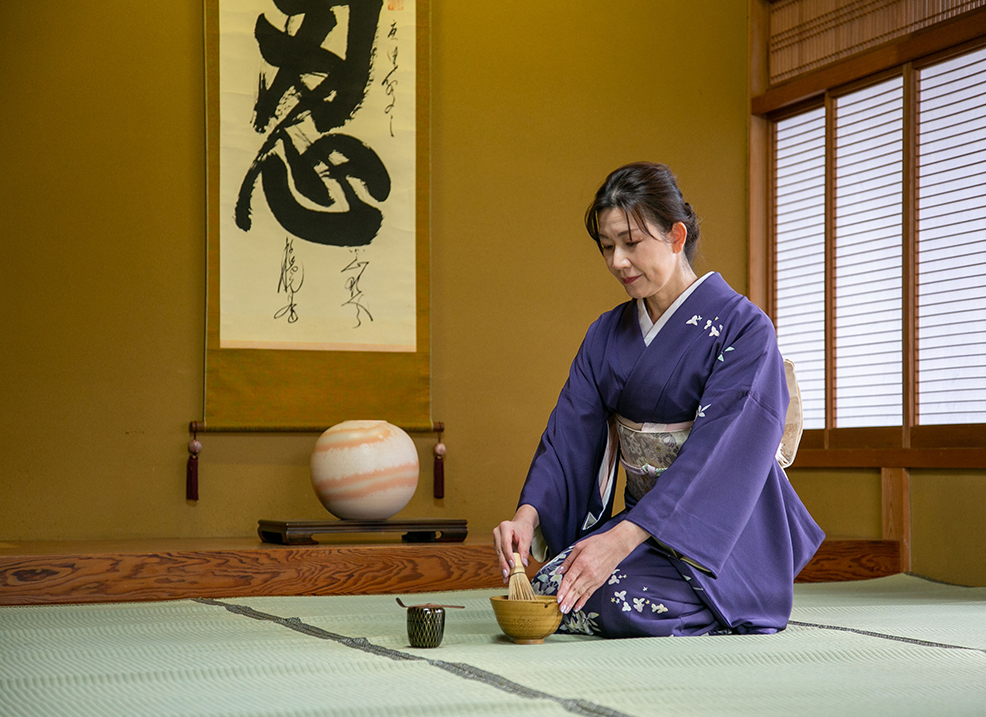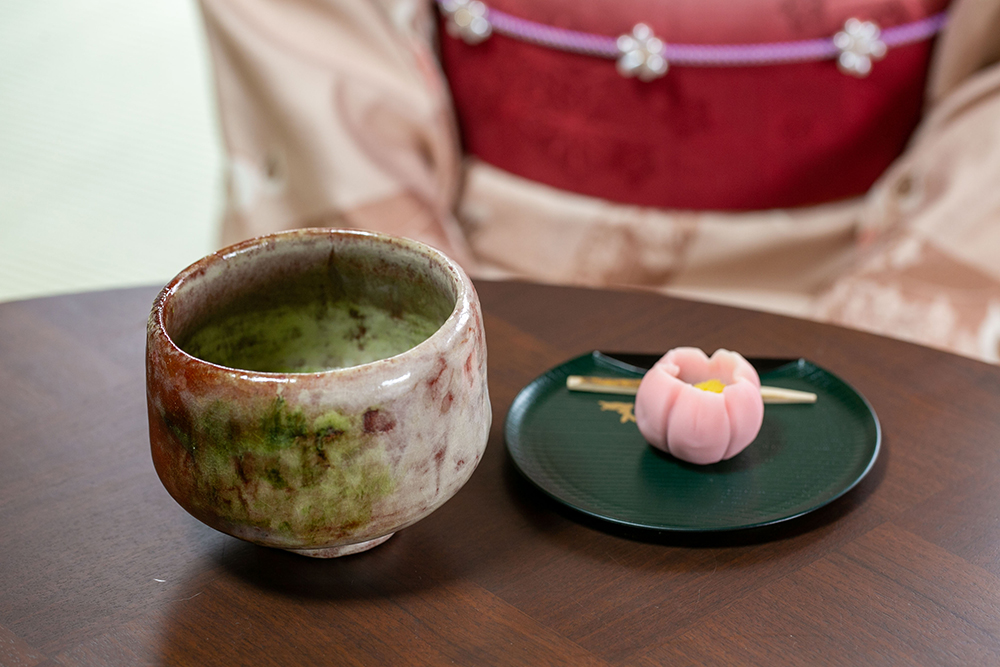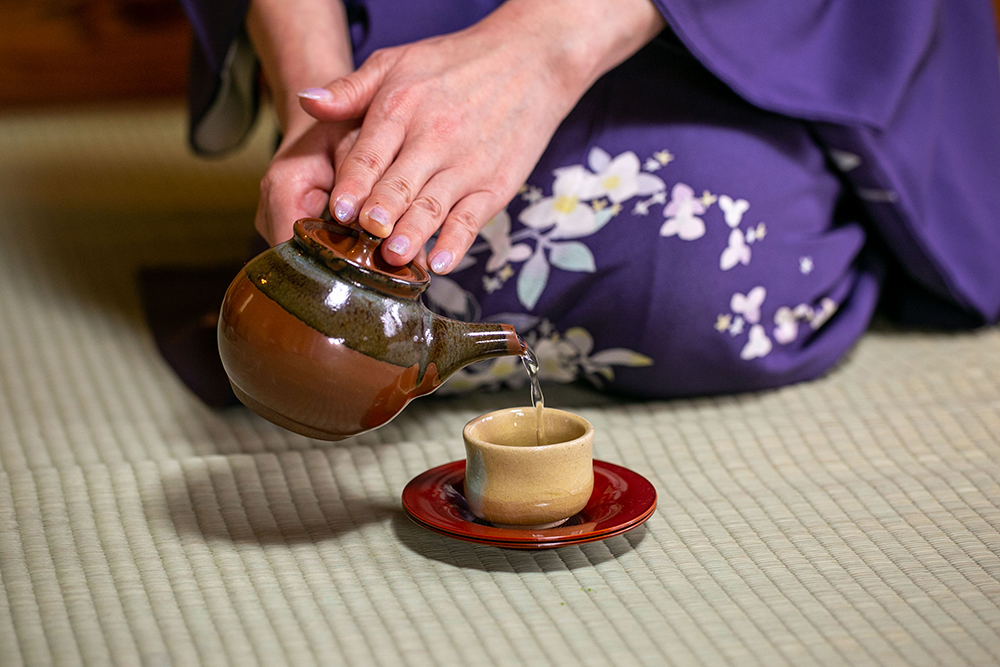The tea ceremony is one of the traditional cultures of Japan. It is a way to connect with people, to harmonize with nature, and to cultivate the mind through brewing and enjoying tea. Here in Matsue City, the 7th lord of the Matsudaira family, Matsudaira Jirigo, popularly known as “Lord Fumai,” taught the tea ceremony without being bound by schools or formalities, and tea culture has taken root in daily life.
At Kobo Kimei, wagashi (Japanese sweets) from the long-established San’eido, which have been widely enjoyed by everyone from tea ceremony guests to souvenirs, tourists to townspeople, will be offered as a tea service with powdered green tea. Please enjoy the culture that expresses the Japanese sense of beauty and spirit that values the deepening of human connections and the conditioning of the mind through tea.
Koubou Kisyou
メニューMatcha green tea, Japanese sweets experience
Matcha green tea and Japanese sweets experience


Mitarashi dumplings are one of Japan’s traditional Japanese sweets, consisting of dumplings topped with miso sauce. Dumplings are made by kneading glutinous rice flour and water, rolling them into a ball, and boiling them. The miso sauce is made by mixing miso, sugar, soy sauce, mirin, and other ingredients. After the dumplings are covered with the miso sauce, the surface is sprinkled with soybean flour.
The origin of the dish is old and is described as “mudarashi-mochi” in the Muromachi period (1333-1573) confectionery collection “Yojyo-kun” (The Book of Yojyo). At that time, the dumpling was eaten by dipping the rice cake in sweetened soy sauce made from the juice of boiled azuki beans. In the Edo period (1603-1867), the Mitarashi dango with soy sauce-flavored sauce was invented and became widely popular among the general populace.
Mitarashi dumplings are characterized by their sweet and salty flavor, and also have a nice sticky texture.


Copyright © Koubou Kisyou
